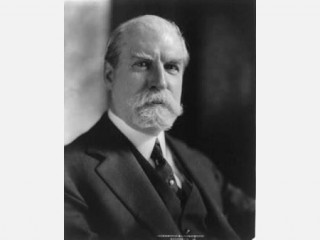
Charles Evans Hughes biography
Date of birth : 1862-04-14
Date of death : 1948-08-27
Birthplace : Glens Falls, New York, U.S.
Nationality : American
Category : Politics
Last modified : 2011-02-09
Credited as : Jurist and statesman, Republican politician,
The American jurist and statesman Charles Evans Hughes served as secretary of state in two administrations and was a chief justice of the Supreme Court.
Charles Evans Hughes was born at Glens Falls, N.Y., on April 14, 1862, the son of a minister. Precocious and gifted with a phenomenal memory, Hughes entered Madison University at the age of 14, transferring later to Brown University. He graduated from Cornell Law School in 1884. For the next 20 years he practiced law, briefly interrupting his work to teach law at Cornell.
At the age of 43 Hughes was chosen by a legislative committee to investigate the gas and electric industry in New York. His brilliant success in exposing extortionate rates led to his appointment as investigator of the insurance scandals in New York. In 1906 he was nominated as the Republican gubernatorial candidate. He won in a bitter campaign against William Randolph Hearst.
Hughes was a vigorous governor. He won a battle for the regulation of public utilities, strove to stamp out racetrack gambling, and was interested in conservation and in an employment compensation law. He was an exacting administrator, demanding high standards.
After a second term as governor, Hughes was appointed an associate justice of the Supreme Court by President William Howard Taft. He distinguished himself by supporting national railroad rate regulation and wrote one of the most important decisions in this field. In 1916 Hughes resigned from the Court to accept the Republican presidential nomination. He was beaten by a narrow margin in the ensuing campaign against Woodrow Wilson. In 1920 Hughes advocated ratification of the League of Nations treaty with reservations and urged the election of Warren Harding to implement acceptance. However, once appointed Harding's secretary of state, he made no effort to secure American adherence to the League Covenant.
Hughes was a brilliant secretary of state. He began by calling the Washington Conference on the Limitation of Armaments, at which he electrified the delegates by proposing a specific schedule for reducing the battleship force of the great naval powers. After some jockeying, a treaty was signed. In a significant concession to Japan, the United States agreed not to increase its fortifications in the Far Pacific. Hughes also brought about a partial settlement of the vexing question of German World War I reparations, gave a more precise definition to the Monroe Doctrine, and improved the quality of the U.S. Foreign service.
After 1925 Hughes for the most part practiced law until, in 1930, he was nominated by President Herbert Hoover as chief justice of the United States. Hughes presided over a Court badly divided and hostile to the New Deal of incoming president Franklin D. Roosevelt. He joined in the Court's decision to set aside the National Recovery Act of 1934 and in the ruling against the Agricultural Recovery Act of 1935. When President Roosevelt advanced his famous Court-packing plan in 1937, Hughes carefully pulverized the President's argument that the Court was behind in its work. This sparring ended when Hughes joined four other justices in sustaining the Wagner Labor Relations Act, an important piece of New Deal legislation. Hughes always maintained that he acted on the basis of the law, not political considerations.
Hughes took an advanced stand on civil rights, especially in cases involving African American rights, and he was a firm advocate of freedom of the press. He resigned from the Court in 1941 and died on Aug. 27, 1948.
















